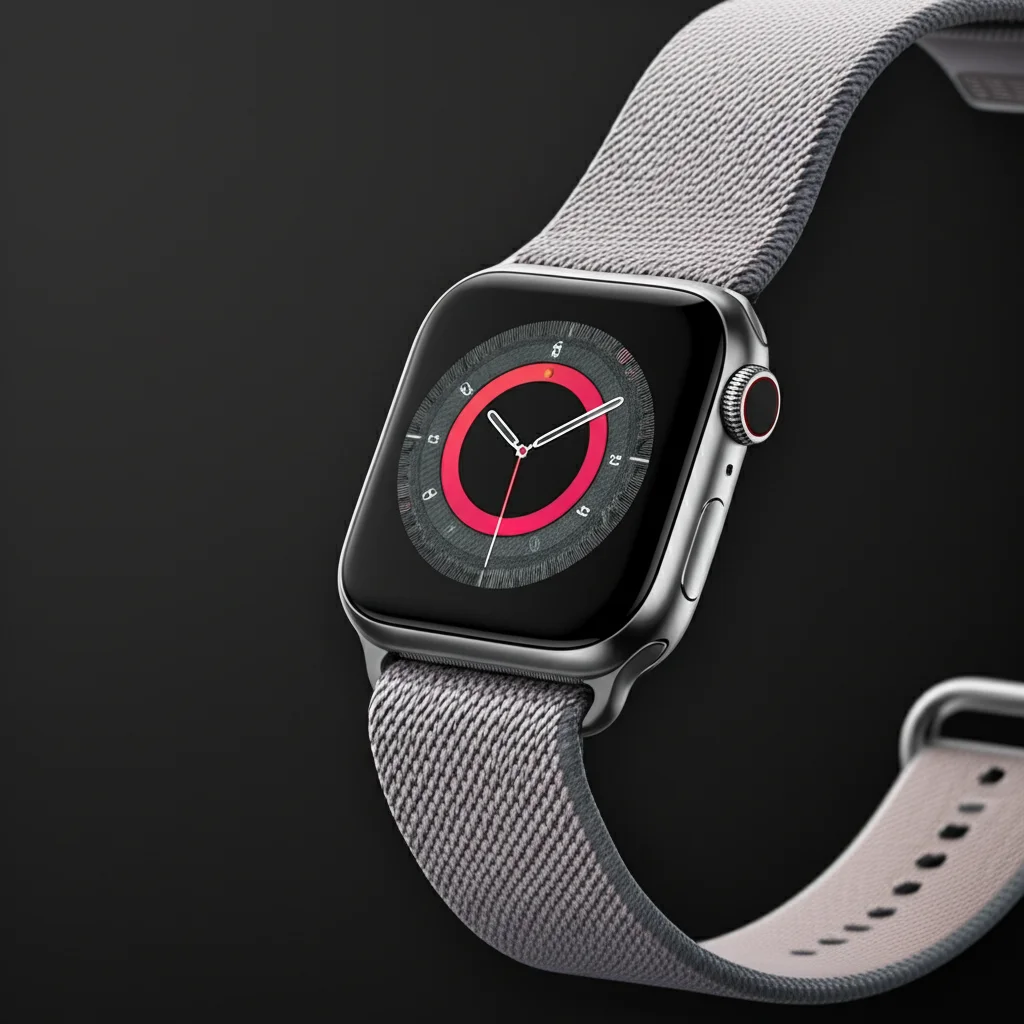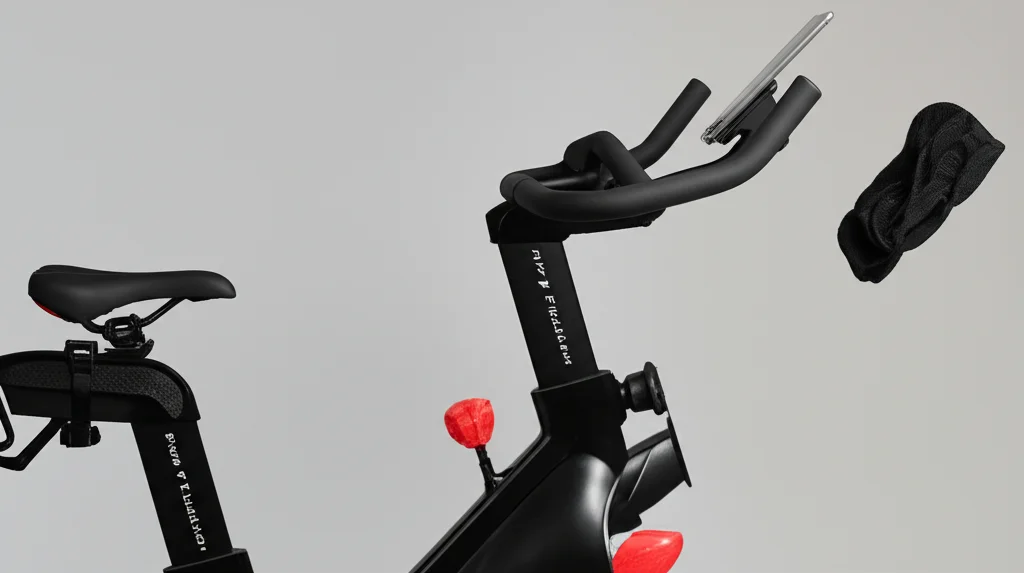· Todd Martin · Tech Accessories Care · 13 min read
How To Clean Braided Solo Loop

Restore Your Braided Solo Loop: A Complete Cleaning Guide
Your Braided Solo Loop offers comfort and style. It is a daily companion for your Apple Watch. Over time, sweat, skin oils, and daily grime build up. This accumulation can make your band look dull and feel less fresh.
Learning how to clean Braided Solo Loop bands properly keeps them looking new. Regular cleaning also helps maintain their unique elasticity and fabric integrity.
This guide will walk you through simple, effective methods. You will learn to clean your Braided Solo Loop, removing dirt and odors.
Takeaway
Keeping your Braided Solo Loop fresh is simple.
- Hand wash with mild soap for best results.
- Use a mesh bag if machine washing on a gentle cycle.
- Always air dry completely to avoid damage.
- Address stains and odors quickly with gentle methods.
To clean your Braided Solo Loop, use mild soap and cool water for a gentle hand wash. Rinse the band thoroughly and air dry it completely away from direct heat. For deeper cleaning, a gentle machine wash in a mesh bag on a delicate cycle can also be effective.
Why Your Braided Solo Loop Needs Regular Cleaning
Your Apple Watch Braided Solo Loop collects many things each day. Sweat, skin oils, lotions, and environmental dust gather on the fabric. This build-up makes the band feel sticky or look discolored. Uncleaned bands can also start to smell unpleasant over time. These issues reduce comfort and affect the band’s appearance.
Regular cleaning stops these problems. It keeps the band feeling soft against your skin. A clean band also maintains its vibrant color. Neglecting to clean your band can lead to fabric degradation. This makes the band stretch out or lose its shape faster. Proper care extends the life of your Solo Loop. It ensures you enjoy its comfort and style for longer.
Daily wear exposes the band to various elements. From intense workouts to everyday tasks, your band works hard. Dirt and debris can lodge themselves into the braided fibers. This creates a breeding ground for bacteria if left unattended. Cleaning helps prevent skin irritation too. It removes allergens and irritants that can build up. I make sure to clean my bands regularly. It helps them feel fresh and new.
Gather Your Essential Cleaning Supplies
Before you begin cleaning your Braided Solo Loop, collect the right tools. Using the correct supplies protects your band. It also ensures an effective cleaning process. You likely have most items already in your home. This makes the cleaning task simple and convenient.
You will need a few basic items. First, get a mild, unscented hand soap or dish soap. Avoid harsh detergents or abrasive cleaners. These can damage the fabric and elastic fibers. Next, prepare a clean, soft microfiber cloth. A toothbrush with soft bristles can also be useful for spot cleaning. You will also need a small bowl or basin. This will hold cool or lukewarm water. Finally, have a clean, dry towel ready. This towel will absorb excess moisture after washing.
Using these specific items helps maintain the band’s quality. Harsh chemicals can strip the band’s natural oils. They can also break down the stretchy material. Always opt for gentle products. They are safe for delicate fabrics. I always use a small amount of baby shampoo. It is very gentle on my bands. These supplies make cleaning your Braided Solo Loop easy and safe.
Hand Washing Your Braided Solo Loop for Best Results
Hand washing is often the best method for your Braided Solo Loop. It offers precise control. This gentle approach helps protect the band’s unique woven structure. It also extends its lifespan significantly. Hand washing reduces the risk of stretching or damage.
Step-by-Step Hand Washing Process
Follow these simple steps for a thorough clean:
- Remove the Band: First, detach the Braided Solo Loop from your Apple Watch. This prevents water damage to the watch itself. Always handle the watch carefully when removing the band.
- Prepare Water: Fill a small basin with cool or lukewarm water. Do not use hot water. Hot water can damage the elastic fibers and affect the band’s shape.
- Add Soap: Add a tiny drop of mild, unscented soap to the water. Swirl the water gently to mix the soap. You want just enough soap to create a slight lather.
- Submerge and Clean: Place the entire Braided Solo Loop into the soapy water. Gently rub the band with your fingers. Focus on areas that show more dirt or discoloration. Use a soft-bristled toothbrush for stubborn spots. Lightly scrub the fabric. Be gentle to avoid damaging the braid. You can see how to care for other fabric items here: How to Clean a Braided Wool Rug.
- Rinse Thoroughly: Remove the band from the soapy water. Rinse it under cool, running tap water. Make sure all soap residue is gone. Soap left behind can irritate your skin or attract more dirt. Squeeze the band gently to push out water.
- Dry Excess Water: Lay the band flat on a clean, dry towel. Press another dry towel on top to absorb excess water. Do not twist or wring the band. This can damage the elastic and shape.
This hand washing method is effective. It keeps your Braided Solo Loop in excellent condition. I use this method for my own bands. It keeps them feeling comfortable and looking great.
Machine Washing Your Braided Solo Loop: When and How
Machine washing your Braided Solo Loop can be convenient. However, it requires caution. This method is suitable for bands that need a deeper clean. It helps remove ingrained dirt or persistent odors. Always prioritize the band’s safety during this process.
Important Precautions for Machine Washing
Take these steps to protect your band:
- Use a Mesh Laundry Bag: Always place your Braided Solo Loop inside a small mesh laundry bag. This bag protects the band from getting snagged. It also keeps it from stretching during the wash cycle. Without a bag, the band could get tangled. This might damage the washing machine or the band itself. You can learn more about washing similar items here: How to Clean Shoes in the Washer.
- Select a Gentle Cycle: Choose the “delicate” or “gentle” cycle on your washing machine. Use cold water only. Hot water can cause the elastic to lose its stretch. It can also shrink the fabric. A slow spin cycle is also important. This minimizes stress on the band.
- Use Mild Detergent: Add a small amount of mild liquid detergent. Avoid harsh chemicals, bleach, or fabric softeners. Bleach can discolor the band. Fabric softeners can leave a residue. They might also break down the elastic fibers over time.
- Wash with Similar Items: Wash the band with other delicate items. Do not wash it with heavy items like jeans or towels. These items can rub against the band and cause friction damage. Lighter loads are better for delicate fabrics.
- Remove Immediately: Once the cycle finishes, remove the band from the mesh bag immediately. Do not leave it sitting wet in the machine. This can cause mold or mildew growth. Learn more about preventing this: How to Clean Mold From Washing Machine.
Machine washing can save time. But it comes with risks if not done correctly. I only machine wash my bands when they are very dirty. Hand washing remains my preferred method for routine cleaning.
Tackling Stubborn Stains and Odors
Sometimes, your Braided Solo Loop needs extra help. Stubborn stains or lingering odors can develop. These problems require targeted treatment. You can often remove them using common household items. Always test any cleaning solution on a small, hidden area first. This prevents potential damage or discoloration.
Spot Cleaning Stains
For specific spots, act quickly. Fresh stains are easier to remove.
- Mild Soap Paste: Mix a tiny amount of mild soap with water to form a paste. Apply this paste directly to the stain. Gently rub it with your finger or a soft-bristled toothbrush. Rinse the area thoroughly with cool water. Pat dry with a clean cloth.
- Baking Soda: Baking soda is great for oil or grease stains. Make a paste with baking soda and a few drops of water. Apply it to the stain. Let it sit for 15-20 minutes. Gently brush it off. Then, rinse the area. Baking soda is a versatile cleaner: How to Clean with Vinegar and Baking Soda.
- White Vinegar: For darker stains or general grime, white vinegar can help. Mix equal parts white vinegar and water. Dampen a cloth with this solution. Gently dab the stained area. Do not soak the band. Rinse thoroughly with cool water afterward.
Eliminating Lingering Odors
Odors are common due to sweat absorption.
- Baking Soda Soak: Place your dry Braided Solo Loop in a sealed plastic bag. Add a few tablespoons of baking soda. Shake the bag gently to coat the band. Let it sit overnight, or for a few days for strong odors. The baking soda absorbs the smells. Remove the band and brush off any residue.
- Vinegar Rinse: After a general wash, you can do a quick vinegar rinse. Mix one part white vinegar with four parts water. Briefly soak the clean band in this solution for 10-15 minutes. This helps neutralize odors. Rinse thoroughly with cool water afterward. Ensure no vinegar smell remains.
- Sunlight: After cleaning, placing the band in direct sunlight for a short period can help. Sunlight is a natural sanitizer and odor reducer. Do not leave it out too long, as excessive sun exposure can fade colors.
By using these methods, you can keep your Braided Solo Loop smelling fresh and looking clean. I often use baking soda for my workout bands. It works wonders on stubborn smells.
Proper Drying Techniques for Your Braided Solo Loop
Drying your Braided Solo Loop correctly is crucial. Improper drying can lead to damage. It can affect the band’s shape, elasticity, and even cause mildew. Always prioritize air drying. Avoid high heat at all costs.
Air Drying is Best
Follow these steps for safe and effective drying:
- Remove Excess Water: After washing and rinsing, gently squeeze the band. Do not wring it forcefully. The goal is to remove as much surface water as possible. Lay it flat on a clean, dry towel. Press another towel on top to absorb more moisture.
- Shape and Lay Flat: Reshape the band to its original form if needed. Lay the band flat on a clean, dry surface or a mesh drying rack. Ensure it is not bunched up. This allows air to circulate evenly around the band.
- Choose a Well-Ventilated Area: Place the band in a well-ventilated room. Avoid direct sunlight or high heat. Direct sunlight can cause fading. High heat from radiators, heaters, or hair dryers can damage the elastic fibers. This leads to stretching or loss of shape.
- Allow Complete Drying: Let the band air dry completely. This can take several hours, or even overnight. The drying time depends on room temperature and humidity. Do not put the band back on your watch or wrist until it is fully dry. A damp band can cause skin irritation or damage to your watch.
- Check for Dampness: Before reattaching, feel the band all over. Ensure no damp spots remain. Dampness can encourage mold growth and unpleasant odors. A truly dry band feels light and soft.
Proper drying protects your investment. It ensures your Braided Solo Loop maintains its fit and comfort. I always let my bands air dry overnight. This way, they are ready for the next day.
Maintaining Your Braided Solo Loop for Longevity
Regular care goes beyond just washing your Braided Solo Loop. Consistent maintenance helps prolong its life. It keeps the band looking good and feeling comfortable. Simple habits can make a big difference in the band’s durability.
Tips for Extending Band Life
- Rotate Your Bands: If you own multiple Apple Watch bands, rotate them regularly. This prevents excessive wear on a single Braided Solo Loop. It also allows each band to rest and air out between uses. Rotation helps distribute the wear and tear.
- Avoid Harsh Chemicals: Keep your band away from strong chemicals. Perfumes, bug sprays, and cleaning products can degrade the fabric. Remove your band before applying these products. Wipe off any accidental splashes immediately with a damp cloth.
- Clean Regularly: Establish a cleaning routine. For daily wearers, a quick wipe down after use is good. A deeper wash every few weeks is ideal. Adjust frequency based on your activity level. If you work out often, clean it more frequently. This helps prevent major dirt build-up and odor issues. Consider how you clean other daily items: How to Clean Apple Watch Sport Loop Band.
- Store Properly: When not in use, store your band in a clean, dry place. Avoid direct sunlight or extreme temperatures. A drawer or a watch box protects it from dust and accidental damage. Do not store it in a humid environment.
- Check for Wear: Periodically inspect your band for signs of wear. Look for loose threads, stretching, or fraying. Addressing minor issues early can prevent them from worsening. If you notice significant stretching, it might be time for a new size or replacement.
Following these simple maintenance tips will keep your Braided Solo Loop in top condition. It ensures it remains a stylish and comfortable accessory for your Apple Watch for years. I always keep my bands clean. This way, they always feel nice to wear.
Frequently Asked Questions About Cleaning Braided Solo Loops
How often should I clean my Braided Solo Loop?
Clean your Braided Solo Loop every 2-4 weeks with regular use. If you exercise frequently or sweat a lot, clean it more often. Daily quick wipes can also help maintain freshness. Regular cleaning prevents dirt and oil buildup, keeping your band hygienic and looking good.
Can I use rubbing alcohol to clean my Braided Solo Loop?
No, do not use rubbing alcohol on your Braided Solo Loop. Alcohol can dry out the fabric fibers and damage the elastic. This can cause the band to lose its stretch or become brittle. Stick to mild soap and water for safe cleaning.
What if my Braided Solo Loop shrinks after washing?
Braided Solo Loops should not shrink if washed with cool water and air-dried. If shrinkage occurs, it might be due to hot water or heat drying. Gently stretch the band while it is still damp to try to regain some of its original size.
How do I remove sunscreen or lotion stains?
For sunscreen or lotion stains, use a mild soap paste. Apply a small amount of mild soap mixed with water to the stain. Gently rub with a soft cloth or toothbrush. Rinse thoroughly with cool water and air dry. Act quickly for best results.
Can I dry my Braided Solo Loop with a hairdryer?
No, do not dry your Braided Solo Loop with a hairdryer. High heat can damage the elastic fibers and cause the band to stretch out permanently or become brittle. Always air dry your band completely for optimal care and longevity.
Is it safe to use fabric softener on my Braided Solo Loop?
Avoid using fabric softener on your Braided Solo Loop. Fabric softeners can leave a residue on the band. This residue can attract more dirt or irritate your skin. It can also break down the elastic materials over time, affecting the band’s fit.
Conclusion
Cleaning your Braided Solo Loop is an important step in caring for your Apple Watch accessories. Regular cleaning removes sweat, oils, and dirt, keeping your band fresh and comfortable. Whether you choose gentle hand washing or a careful machine wash, remember to use mild products and avoid harsh chemicals. Proper drying, away from heat, is also vital to maintain the band’s shape and elasticity.
By following these simple steps, you extend the life of your favorite band. Your Braided Solo Loop will continue to look great and feel soft against your skin for years to come. Take the time to care for your accessories. They work hard for you every day. Keep your Braided Solo Loop clean, and enjoy its unique comfort.
- Apple Watch cleaning
- Solo Loop care
- braided band maintenance
- fabric watch strap
- sweat removal
- odor control




